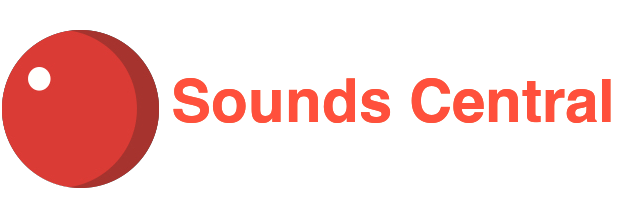Yoga, drugs, a growing awareness of media and a few computers here or there – in the Sixties many new things came onto the Western world’s agenda. They set the course for a radically different future in which self-expression became increasingly important.

Duplex: Presentation 3/6/68 by Intersystems at the Art Gallery of Ontario (1968, photo: johnmillscockell.ca)
As many of the changes brought about by the decade were driven by technology, it is symbolized in the collective memory by the NASA space program; however, in music production it is the synthesizer.
The Canadian multimedia artist group Intersystems used the quirky sounds of the instrument in 1968 to question the ideal of nuclear family life with the 50-minute piece Free Psychedelic Poster Inside; and they created stunning one-off environments in all kinds of settings by mixing musique concrète from a Moog Modular System with psychedelic light installations and poetry.
Around the same time, the German band Can began to combine international and European music in their series of short works E.F.S. (Ethnological Forgery Series). The fantasy world of these imitations was created with the instruments available in their studio.
Henry Flynt, who coined the term conceptual art, had the idea for New American Ethnic Music – an anthropological approach to Appalachian music, which he pursued from the late Sixties onwards. It is said that Flynt sometimes succeeded in elevating styles such as bluegrass or country to a level of enchantment with just a banjo.

When punk exploded in the mid-Seventies, the circumstances of cultural production changed dramatically. Alternative distribution channels emerged and musical instruments gradually became affordable, so that the democratization of music production reached a peak in the Eighties.
Releases on cassette were a cheap and quick way to get music out. In 1983, the Tellus Audio Cassette Magazine began reporting on projects in the New York City art scene, such as the short-lived collaborative band Boom. Everywhere, bedroom producers like the Irish self-declared non-musician Stano became more and more common. When he released his debut LP in 1983, he had only played one live solo gig, at the Project Arts Center in Dublin.

As early as 1980, Canadian artist John Oswald began experimenting in his home studio with recorded sounds from a wide variety of sources, placing them in new contexts and thus spearheading the concept of plunderphonics – ‘stealing’ sounds for the sake of art. A path that artists such as Vicki Bennett aka People Like Us continue to follow to this day.
The idea that recorded sound could become material was given a boost with the introduction of the sampler. In 1983, German producer Holger Hiller rented one of the ridiculously expensive devices for a few days. The results of his approach appeared on the LP Ein Bündel Fäulnis in der Grube and pointed to a new direction for electronic music.
With computers, the possibilities of zooming into sounds and arranging tiny fragments went even further. The founder of the industrial band SPK, New Zealand artist Graeme Revell, used such a machine in 1986 to work with recordings from the BBC and British Wildlife Sounds. After arranging them digitally via a screen, the sounds of beetles, crickets, grasshoppers and bees began to dance.
It is a common misconception that DIY music productions are necessarily realized without a budget. In fact, their most striking characteristic is that they aim to create unique listening experiences by turning ideas into sound – using the means at hand.
36 minutes with works by Blancmange, Gregory Whitehead, Minus Delta T, People Like Us and others.
Featured cover art: People Like Us – Welcome Abroad
Listen also to
The Poetry of DIY – Ideas Expressed With Sound (1956-2016)
Playlist ‘More Poetry of DIY’
John Oswald – x2-d
a glimpse into the artist‘s cornucopia of essential and vivacious sounds from everywhere and whenever, mapped into vortextual sequences and overlaps (1982, Mystery Tapes etc.)
Blancmange – Modichy in Aneration
from the debut 7“ of the synth-pop duo that emerged from London‘s DIY punk scene (1980, Optimo Music)
Minus Delta T – Young Social Democrat
passage from the open air avantgarde project Opera Death that premiered in West-Berlin (1987, Ata Tak)
Intersystems – A Cave In The Country a.k.a. Draped In Fluorescent Orange
musique concrète from outside the academic world (1967, Alga Marghen)
Henry Flynt – Solo Virginia Trance
an anthropological approach at the music of Appalachia (1975, Recorded)
Gregory Whitehead – As We Know
working with a quote by US Secretary of Defense Donald Rumsfeld about known and unknown unknowns, as uttered when asked about the lack of evidence of Iraq’s involvement in supplying weapons of mass destruction to terrorist groups (2004, unreleased)
Can – E.F.S. (Ethnological Forgery Series) No. 10
imitating world music (1969, United Artists Records)
Graeme Revell – La Danse Des Tenebres (Dance Of Shadows)
arranging the sounds of insects with a computer (1986, Musique Brut)
Cornershop – When The Light Appears Boy
Allen Ginsberg poem embedded in a soundscape from Punjab (1995, Wiiija Records)
Boom – Spy
one-hit wonder from New York City (1984, Tellus)
Stano – Vixen
from the non-musician‘s debut LP (1983, AllChival)
People Like Us – Sing
transferring music of the collective subconscious into a dreamy landscape (2010, Illegal Art)
Holger Hiller – Budapest – Bukarest
a new direction for electronic music (1983, Ata Tak)




